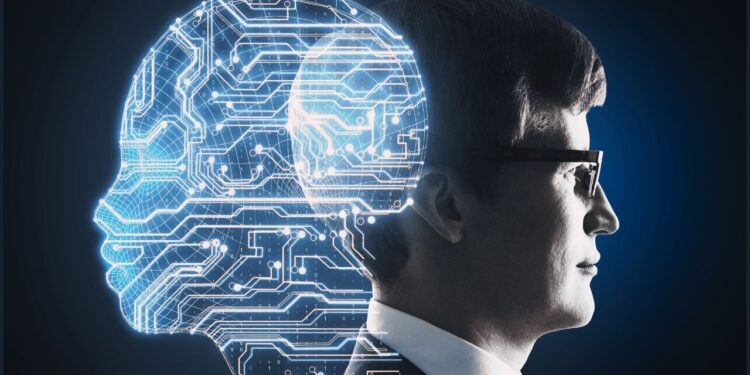- The face-to-face aspect of the hybrid work model nurtures an environment conducive to brainstorming, problem-solving, and the generation of revolutionary ideas.
- These are inherently human capabilities that AI cannot mimic, making knowledge workers vital in the creative and innovative processes.
- While AI can automate certain tasks, the human elements of work — such as collaboration, relationship-building, culture cultivation, complex decision-making, and emotional intelligence — are irreplaceable.
As we gradually emerge from the pandemic’s grip, many knowledge workers are grappling with a dilemma, as the thought of returning to the office evokes a mix of apprehension and longing.
Simultaneously, the specter of AI-induced job loss is increasingly apparent. It’s akin to being trapped between the proverbial devil and the deep blue sea, or more fittingly, between an office chair and a high-powered computer.
Let’s reassess the situation: Despite its occasional drawbacks, the office provides a distinctive setting for teamwork, creativity, and social engagement. It’s the metaphorical oasis where ideas are shared, bonds are formed, and company culture is cultivated. This is the perspective I urge my clients to adopt when shaping their hybrid work strategies.
The McKinsey Report: An In-depth Exploration of AI’s Future
The recent McKinsey report, “The Economic Potential of Generative AI: The Next Productivity Frontier,” provides a compelling glimpse into the future. Generative AI, with its capacity to generate new, unique content, is projected to contribute up to $13 trillion to the global economy by 2030. This equates to a 1.2% annual increase in global GDP, a significant number given that the global GDP growth rate has hovered around 3% per year over the last decade.
Generative AI is causing ripples in product and service innovation, spawning new product designs, producing marketing content, and even pioneering new business models. Envision a fashion brand utilizing a generative AI model to create fresh clothing designs based on current fashion trends, or a marketing firm employing a text generation model to craft advertising copy. The potential is limitless.
But it’s not solely about innovation. Generative AI is also enhancing business operations, automating mundane tasks, improving decision-making, and streamlining processes. A logistics firm could employ a generative AI model to optimize its delivery routes, while a manufacturing company could leverage a generative AI model to enhance its production processes.
The Hybrid Approach: A Countermeasure to AI Disruption
The McKinsey report’s insights into generative AI’s potential to transform the global economy and labor market are indeed astounding. However, these insights also highlight a significant worry: the risk of job loss for knowledge workers. The report suggests that “current generative AI and other technologies could automate work activities that currently consume 60 to 70 percent of employees’ time” and “has a greater impact on knowledge work associated with higher-wage and higher-education occupations than on other types of work.”
Yet, the hybrid work model, blending remote work with in-office attendance, offers a hopeful solution.
Here’s how the in-office element of the hybrid work model can help knowledge workers secure their roles in the AI era.
While AI has made remarkable progress in automating routine tasks, it lags in areas requiring human creativity and innovation. The face-to-face aspect of the hybrid work model nurtures an environment conducive to brainstorming, problem-solving, and the generation of revolutionary ideas. These are inherently human capabilities that AI cannot mimic, making knowledge workers vital in the creative and innovative processes.
The capacity to establish and foster relationships is a uniquely human characteristic that AI cannot replicate. In-office interactions under the hybrid work model offer knowledge workers the chance to build strong professional networks and interpersonal relationships. These relationships often lead to collaborative opportunities and career progression, enhancing employees’ value to their organizations.
A robust corporate culture is a key driver of employee engagement, productivity, and retention. AI, despite its capabilities, cannot contribute to a company’s culture. The face-to-face interactions facilitated by the hybrid work model play a pivotal role in nurturing and sustaining a dynamic corporate culture. This makes employees an essential part of the organization, further securing their positions.
AI can process vast amounts of data and offer valuable insights. However, it often falls short in complex decision-making scenarios that require a deep understanding of the business, industry trends, and human factors. Knowledge workers who regularly interact with colleagues and stay informed about company developments through in-office presence can make nuanced decisions that AI cannot, thereby solidifying their roles.
Emotional intelligence, the ability to comprehend, utilize, and manage emotions effectively, is a critical skill that AI lacks. In-office presence in a hybrid work model allows knowledge workers to leverage their emotional intelligence in roles that require negotiation, conflict resolution, and team management. This makes them irreplaceable in situations that require a human touch.
The Future is Hybrid
The hybrid work model, particularly its in-office component, offers a robust defense for knowledge workers against AI-induced job displacement. While AI can automate certain tasks, the human elements of work — such as collaboration, relationship-building, culture cultivation, complex decision-making, and emotional intelligence — are irreplaceable. By embracing the hybrid work model, knowledge workers can continue to add unique value to their organizations, thereby securing their roles in the face of AI disruption.


 Dr. Gleb Tsipursky – The Office Whisperer
Dr. Gleb Tsipursky – The Office Whisperer Nirit Cohen – WorkFutures
Nirit Cohen – WorkFutures Angela Howard – Culture Expert
Angela Howard – Culture Expert Drew Jones – Design & Innovation
Drew Jones – Design & Innovation Jonathan Price – CRE & Flex Expert
Jonathan Price – CRE & Flex Expert











